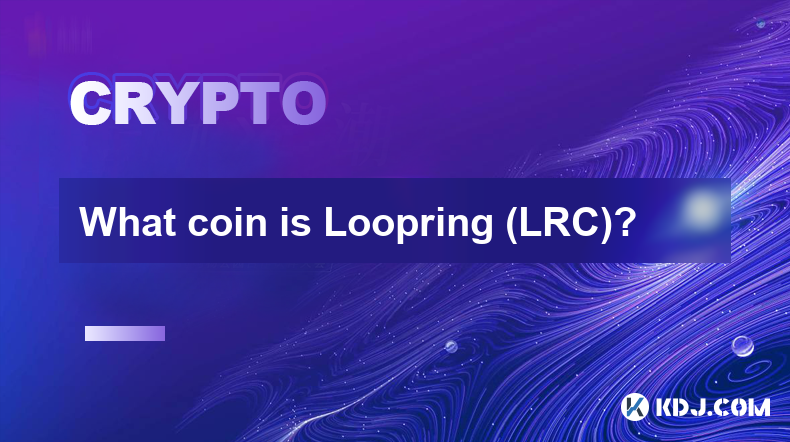-
 Bitcoin
Bitcoin $102,163.2697
6.02% -
 Ethereum
Ethereum $2,150.5881
19.90% -
 Tether USDt
Tether USDt $1.0002
-0.01% -
 XRP
XRP $2.2816
8.03% -
 BNB
BNB $621.9127
3.90% -
 Solana
Solana $160.9056
10.18% -
 USDC
USDC $0.9999
-0.01% -
 Dogecoin
Dogecoin $0.1919
12.84% -
 Cardano
Cardano $0.7428
12.87% -
 TRON
TRON $0.2549
2.81% -
 Sui
Sui $3.9413
20.96% -
 Chainlink
Chainlink $15.6333
15.00% -
 Avalanche
Avalanche $21.5896
11.76% -
 Stellar
Stellar $0.2857
10.70% -
 Shiba Inu
Shiba Inu $0.0...01415
12.36% -
 Bitcoin Cash
Bitcoin Cash $418.6912
17.25% -
 UNUS SED LEO
UNUS SED LEO $8.8588
1.73% -
 Pi
Pi $0.6406
10.47% -
 Hedera
Hedera $0.1918
10.27% -
 Toncoin
Toncoin $3.2151
7.17% -
 Hyperliquid
Hyperliquid $23.1281
10.85% -
 Litecoin
Litecoin $93.2866
5.66% -
 Polkadot
Polkadot $4.3578
11.64% -
 Monero
Monero $297.8483
6.26% -
 Dai
Dai $1.0002
0.00% -
 Bitget Token
Bitget Token $4.4492
5.91% -
 Ethena USDe
Ethena USDe $1.0003
-0.04% -
 Pepe
Pepe $0.0...01078
32.09% -
 Bittensor
Bittensor $417.8303
16.87% -
 Uniswap
Uniswap $5.6674
18.46%
What coin is Loopring (LRC)?
Loopring (LRC) is a decentralized Ethereum-based protocol that enables users to engage in non-custodial cryptocurrency trading without intermediaries, providing enhanced privacy, scalability, and cost-efficiency.
Dec 08, 2024 at 07:16 pm

What Coin is Loopring (LRC)?
Introduction
Loopring (LRC) is a decentralized exchange protocol that enables the creation of high-performance, secure, and non-custodial cryptocurrency exchanges. It utilizes a unique infrastructure based on zero-knowledge proofs and ring signatures to provide anonymity, efficiency, and scalability for decentralized trading.
What is Loopring (LRC)?
Loopring (LRC) is an Ethereum-based protocol that empowers users to trade cryptocurrencies in a decentralized manner. It removes the need for intermediaries by enabling direct peer-to-peer trading through smart contracts on the blockchain. The LRC token is the native utility token of the Loopring protocol, used for various functions such as staking, governance, and transaction fees.
Benefits of Using Loopring (LRC)
- Decentralized Trading: Loopring eliminates the reliance on centralized exchanges, offering users complete autonomy over their trading activities.
- Enhanced Privacy: Loopring employs zero-knowledge proofs and ring signatures, ensuring anonymity and privacy during crypto transactions.
- High Scalability: The Loopring architecture leverages layer-2 solutions to handle large volumes of trades, significantly reducing transaction times and costs.
- Cost-Efficiency: Loopring eliminates expensive intermediaries, resulting in lower trading fees compared to traditional centralized exchanges.
- Security and Transparency: Loopring uses smart contracts to automate trading processes, enhancing security and fostering transparency through immutable records.
How Does Loopring (LRC) Work?
- Layer-2 Architecture: Loopring operates on a layer-2 scaling solution built on the Ethereum blockchain, known as zkRollups. This allows for faster and cheaper transactions compared to on-chain swaps.
- Zero-Knowledge Proofs and Ring Signatures: Loopring utilizes zero-knowledge proofs to confirm transaction validity without revealing sensitive information. Ring signatures obfuscate transaction participants, providing anonymity and privacy.
- Order Matching and Execution: The Loopring protocol matches orders off-chain, using a decentralized network of relayers and validators. Trades are then executed on layer-2, ensuring high performance and scalability.
- Settlement and Clearing: Once orders are executed, they are processed through layer-1 for final settlement and clearing. This process ensures the finality and immutability of transactions on the Ethereum blockchain.
- Staking and Governance: LRC token holders can stake their tokens to earn passive income and participate in the governance of the Loopring protocol through the Loopring DAO.
Disclaimer:info@kdj.com
The information provided is not trading advice. kdj.com does not assume any responsibility for any investments made based on the information provided in this article. Cryptocurrencies are highly volatile and it is highly recommended that you invest with caution after thorough research!
If you believe that the content used on this website infringes your copyright, please contact us immediately (info@kdj.com) and we will delete it promptly.
- Unstaked Quietly Proves Why It May Be the Best Crypto Right Now
- 2025-05-09 05:15:12
- As the Bitcoin Price Drives Toward $150,000, the ripple effect across the altcoin market is already being felt.
- 2025-05-09 05:15:12
- Solana (SOL) Price Prediction: SOL Pushes Toward a Breakout
- 2025-05-09 05:10:14
- Massive Reallocation to Drive Developer Engagement
- 2025-05-09 05:10:14
- Alex Mashinsky, Founder of Collapsed Crypto Lending Platform Celsius Network, Sentenced to 12 Years in Prison for Fraud
- 2025-05-09 05:05:15
- title: As interest in SHIB declines among retail investors, more than half of its holders are facing losses
- 2025-05-09 05:05:15
Related knowledge

Is Ethereum smart contract call fee high? How to optimize costs?
May 08,2025 at 09:35am
Is Ethereum Smart Contract Call Fee High? How to Optimize Costs? The world of Ethereum smart contracts has revolutionized the way we think about decentralized applications and blockchain technology. However, one of the most frequently discussed topics within this realm is the cost associated with executing smart contract calls. In this article, we will ...

Is Ethereum Layer2 fee low? How to use it cheaper?
May 08,2025 at 03:56am
The question of whether Ethereum Layer 2 solutions offer lower fees and how to use them more economically is a topic of great interest within the cryptocurrency community. Ethereum's Layer 2 solutions have been developed to address the high transaction fees and scalability issues associated with the main Ethereum network. In this article, we will delve ...

How to calculate Ethereum network fee? How to reduce transaction costs?
May 08,2025 at 02:15am
Understanding and managing Ethereum network fees is crucial for anyone involved in transactions on the Ethereum blockchain. The network fee, also known as gas fee, is the amount of Ether (ETH) required to successfully conduct a transaction or execute a smart contract on the Ethereum network. Calculating these fees and finding ways to reduce them can sig...

What is Ethereum Gas Fee? How to optimize Gas Fee to save costs?
May 08,2025 at 03:43am
Ethereum gas fees are a crucial aspect of interacting with the Ethereum blockchain. Understanding and optimizing these fees can significantly impact the cost-effectiveness of transactions and smart contract interactions. In this article, we will delve into what Ethereum gas fees are, how they are calculated, and provide detailed strategies for optimizin...

How to perform MOVE cross-chain transfer? What to do if the gas fee is too high?
May 07,2025 at 08:03pm
Introduction to MOVE Cross-Chain TransferCross-chain transfers have become an essential part of the cryptocurrency ecosystem, allowing users to move assets between different blockchain networks. One of the popular protocols for achieving this is the MOVE cross-chain transfer. This article will guide you through the process of performing a MOVE cross-cha...

How is the DYDX liquidation price calculated? How is the forced liquidation mechanism?
May 08,2025 at 06:49am
The DYDX liquidation price and the forced liquidation mechanism are crucial aspects of trading on the dYdX platform, a decentralized exchange that allows users to trade perpetual contracts. Understanding these concepts is essential for managing risk and maximizing potential returns. In this article, we will delve into the details of how the DYDX liquida...

Is Ethereum smart contract call fee high? How to optimize costs?
May 08,2025 at 09:35am
Is Ethereum Smart Contract Call Fee High? How to Optimize Costs? The world of Ethereum smart contracts has revolutionized the way we think about decentralized applications and blockchain technology. However, one of the most frequently discussed topics within this realm is the cost associated with executing smart contract calls. In this article, we will ...

Is Ethereum Layer2 fee low? How to use it cheaper?
May 08,2025 at 03:56am
The question of whether Ethereum Layer 2 solutions offer lower fees and how to use them more economically is a topic of great interest within the cryptocurrency community. Ethereum's Layer 2 solutions have been developed to address the high transaction fees and scalability issues associated with the main Ethereum network. In this article, we will delve ...

How to calculate Ethereum network fee? How to reduce transaction costs?
May 08,2025 at 02:15am
Understanding and managing Ethereum network fees is crucial for anyone involved in transactions on the Ethereum blockchain. The network fee, also known as gas fee, is the amount of Ether (ETH) required to successfully conduct a transaction or execute a smart contract on the Ethereum network. Calculating these fees and finding ways to reduce them can sig...

What is Ethereum Gas Fee? How to optimize Gas Fee to save costs?
May 08,2025 at 03:43am
Ethereum gas fees are a crucial aspect of interacting with the Ethereum blockchain. Understanding and optimizing these fees can significantly impact the cost-effectiveness of transactions and smart contract interactions. In this article, we will delve into what Ethereum gas fees are, how they are calculated, and provide detailed strategies for optimizin...

How to perform MOVE cross-chain transfer? What to do if the gas fee is too high?
May 07,2025 at 08:03pm
Introduction to MOVE Cross-Chain TransferCross-chain transfers have become an essential part of the cryptocurrency ecosystem, allowing users to move assets between different blockchain networks. One of the popular protocols for achieving this is the MOVE cross-chain transfer. This article will guide you through the process of performing a MOVE cross-cha...

How is the DYDX liquidation price calculated? How is the forced liquidation mechanism?
May 08,2025 at 06:49am
The DYDX liquidation price and the forced liquidation mechanism are crucial aspects of trading on the dYdX platform, a decentralized exchange that allows users to trade perpetual contracts. Understanding these concepts is essential for managing risk and maximizing potential returns. In this article, we will delve into the details of how the DYDX liquida...
See all articles




















































































